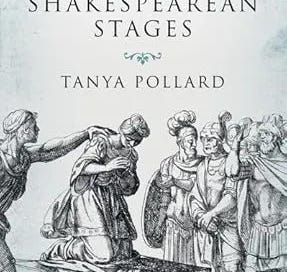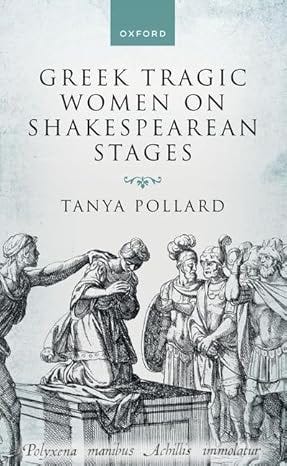Reading with Understanding
Pray thee, take care, that taks’st my Book in hand, To read it well: that is, to understand.[1]
Ben Jonson, Epigrams
When Ben Jonson implores his reader to “read it well: that is to understand” he is demanding that the reader approach the work hermeneutically, following a process of textual interpretation which dates back thousands of years but had gained renewed significance in the sixteenth century following the Reformation. Martin Luther’s sola fida, sola scriptura had denied both the intercessory function of the Church and its authority over matters of belief. It was up to the individual protestant to interpret the word of God from the textual artifacts available. This returned Christian faith to a text-based religion from an institutional one mediated by priests and their proscriptions. The new demands on readers and the social, religious and intellectual implications that spring from them pervade Renaissance thought and especially the works of Shakespeare who often explores them in the metaliterary subtexts of his plays.
At its core hermeneutics is as simple as parsing a sentence. As the reader encounters each word in turn, the specific meaning signified by the word alone is processed with the proceeding words and gains meaning from context. When the whole sentence has been parsed, an interpretation is found which respects the individual word meanings as synthesized into an organic whole and which credits the author with intention to communicate something in the context of a wider conversation. We all do this with more or less success every day.
Traditional hermeneutic practice extends these principles to entire literary texts. An initial reading offers both surface meaning and suggests richer cognitive structures through metaphor and previous texts through allusion. By considering how these additional meanings resonate with the literal meaning of the text the reader can speculate on the author’s intent to create a textual object in which all these layers function together to form a coherent work. The range of concepts and related texts within which a work is interpreted is called the interpretive horizon. The process of analyzing and interpreting a text is envisioned as an iterative sequence in which initial impressions and expectations define a scope for interpretation and synthesis and further consideration of this framework identifies additional ideas and texts which expand the interpretive horizon, while discarding others as fruitless in interpreting the work. This process of alternately synthesizing and redefining the scope of the corpus under consideration is called the hermeneutic circle. The process ends when we have a unitary interpretation which we believe exhausts the intent of the work and see no reason in our interpretation to add any more to the corpus of texts and ideas being considered.
Because the choice of content for the interpretive circle can determine the final interpretation, conflicts of interpretation often reduce to disagreement about whether some idea or prior work should or should not be considered within the analysis. Indeed modern critical theory abandons the idea that a single best reading is even possible, instead emphasizing reader response, the idea that each reader encounters the work with a unique interpretive background which defines how they understand the text. Thus Marxist theory and feminist theory constitute distinct and valid interpretations that come from privileging those distinctive perspectives. Denying the availability or salience of authorial intent constitutes the ‘Death of the Author’ introduced in 1967 by Roland Barthes in his eponymous essay. Whatever the merits of Barthes’ literary theory, in trying to parse Jonson for the identity and biography of Shakespeare we are very much interested in keeping him alive. The whole point of reading literary texts for historical information is to extract from them what the author intended us to find and not to substitute our own modern perspectives. The challenge and importance of establishing the correct interpretive circle for Elizabethan texts is perhaps best illustrated by an example in which Shakespeare himself explicitly raises the question.
“What’s Hecuba to him, or he to Hecuba”
Hamlet Act 2 Scene 2
Perhaps the most explicit reference to hermeutic interpretation in Shakespeare appears in Hamlet, when the prince invites the visiting player to perform a speech he had seen before, ‘Aeneas’ tale to Dido, and thereabout of it especially where he speaks of Priam’s slaughter,’ an apparent refence to Virgil. Hamlet’s interest is specific, when Polonius complains ‘this is too long,’ Hamlet directs, ‘Say on; come to Hecuba.’ As the player describes the distraught reaction of Hecuba to her husband’s death, his eyes fill with tears and Hamlet contrasts his own restrained and impotent reaction to the murder of his own father, ‘What’s Hecuba to him, or he to Hecuba, that he should weep for her?’ While recognizing that the actor is reacting to a literary character with no personal significance to him is enough to contrast Hamlet’s detachment, the details of Hecuba’s story offer a much richer reading.
In Greek Tragic Women on Shakespearean Stages, Tanya Pollard argues that modern critics have neglected the popularity of Greek tragedy and particularly Euripide’s Hecuba in Elizabethan England, and that ‘Hamlet acquires different meanings if one takes seriously the play’s preoccupation with Hecuba as a symbol of the moving power of tragedy.’ Euripides Hecuba offers an alternative narrative for Hamlet to follow, ‘Unlike Seneca’s Hecuba, Euripides’s Hecuba uses lament, the ritual voicing of mourning for the dead, to transform her grief into violence that is depicted as both successful and justified. After passionately lamenting, first her sacrificed daughter and then her newly discovered, murdered son, she earns the moral authority to persuade not only her sympathetic chorus, but also the ruler Agamemnon, that she must punish the murderer Polymestor. Ultimately, with the help of her female attendants, she kills Polymestor’s children in front of him, and then blinds him.’
The relevance of this story to the Danish prince contemplating the player’s speech seems obvious enough to require no additional argument, but Pollard must also establish that Euripedes was available to an English audience. She supports this assertion with a review of its history of publication, ‘It was the first Greek play to be translated into Latin, by Erasmus, who published it with Iphigenia in Aulis in 1506 — only three years after the Greek editio princeps was published by Venice’s Aldine Press’ and in vernacular translation ‘it was translated into Spanish in 1533; French in 1544; and Italian in 1543, 1550, 1563, and 1592, for a total of seven vernacular editions — again, far more than any other Greek play.’ Note the absence of English in the list. The modern academic biography of Shakespeare as a relatively uneducated actor from the Midlands with “small Latin and less Greek” has discouraged academic interpretation which considers Euripedes as a source in Shakespeare. Pollard has to argue against that consensus to validate her interpretation.
Pollard suggests the performance history made the play particularly relevant to Shakespeare’s Hamlet, ‘It is also the first Greek tragedy with documented postclassical performances, directed by Melanchthon in the Low Countries between 1506 and 1514, and again in 1525 in Wittenberg — where Shakespeare sent Hamlet to study.’ Invoking Philip Melanchthon and Wittenberg connects with the religious subtext widely recognized in the play. The appearance of the ghost and Hamlet’s decision not to kill his uncle at prayer appear to defy Protestant teaching about purgatory and salvation. Wittenberg suggests the prince himself shared Melancthon’s irenic position, which left him theologically stranded between heaven and hell. Finally, Pollard considers the period critical response, ‘Gasparus Stiblinus, the translator and editor of the first Greek-Latin volume of Euripides’s complete works (1562), pronounced Euripides the prince of tragedy and claimed that Hecuba held the first place among the tragedies. Philip Sidney used the play as an example of the power of well-made tragedy, and Joseph Scaliger and Antonio Minturno similarly used it to illustrate proper tragic structure —compact, but with a complex variety of incidents in the plot — in their discussions of the genre.’ We will see that combination of Sidney, Scaliger and Minturno again when we consider Jonson’s first folio encomium.
Pollard’s argument seeks to bring “the predominantly female-centered canon of Greek tragedy” within the compass of Shakespeare’s works. Another source, even more closely matching the circumstance of Hamlet’s discussion with the player would bring in the world of Greek philosophy. In Plato’s dialogue Ion, Socrates explores the nature of acting with a performer of that name. Socrates asks if the actor is affecting his performance by art when he performs an emotionally charged scene – he specifically mentions Hecuba, or if he actually feels the emotions that bring his tears. Socrates inquires three times, ‘are you in your right mind’ or ‘are you not carried out of yourself’. He finishes with a question of how the actor perceives his audience respond. Ion’s answer provides a recipe for the forthcoming ‘mousetrap’, ‘for I look down upon them from the stage, and behold the various emotions of pity, wonder, sternness, stamped upon their countenances when I am speaking: and I am obliged to give my very best attention to them; for if I make them cry I myself shall laugh, and if I make them laugh I myself shall cry when the time of payment arrives.’
To my knowledge no one has ever advanced an argument that Hamlet draws upon Ion, or explored the potential significance of Plato’s philosophy expressed in the dialogue for the metatheatrical subtext of the play. Once again it is outside the box which scholars have constructed for Shakespeare based on Jonson granting him but ‘small Latin and less Greek’ and the apparent evidence from the Stratford man’s biography that he could hardly have acquired any more.
While we can, like Pollard, marshal historical and literary evidence to establish the relevance of potential literary sources, wouldn’t it be lovely if writers had left us instructions about where to look and what to consider? In my efforts to better understand Jonson I stumbled upon a relatively recent article that claims just that, that Jonson had used a three part anagram/acrostic derived from instructions in Horace to provide internal annotations to his writing, which he used to provide dates, and the names of the sources for his literary references.
Continue reading: Why Ben Jonson Writes Not of Love
[1] Ben Jonson’s 1616 Folio (Newark : University of Delaware Press ; London ; Cranbury, NJ : Associated University Presses, 1991), http://archive.org/details/benjonsons1616fo0000unse.




